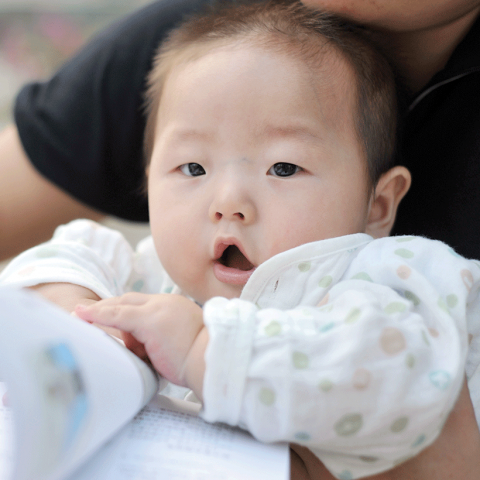Case Studies
Reducing Infant Mortality Rates Across the Country
In 2014, babies born in the United States were more than twice as likely to die in their first year of life than a baby born in the Czech Republic, Finland, Japan, Portugal or Sweden. In total, 23 nations have lower infant mortality rates (IMR) than the United States. Significant racial inequities accompany these staggering figures, with non-Hispanic black babies more than twice as likely to die compared to white babies in their first year of life in the U.S. If these rates remained unchanged, over 23,000 babies would continue to die annually.
Our Approach
NICHQ addressed the challenge of infant mortality by leveraging a unique methodology that combined quality improvement (QI), innovation and collaborative learning. To effectively unite the 51-participating state and jurisdiction teams around a common goal, we used a collective impact framework where NICHQ served as the backbone organization alongside HRSA MCHB, providing resources and facilitating coordination. Three core methods—the Breakthrough Series, the Model for Improvement and Collaborative Innovation Networks—helped teams test change and collaborate around shared interests.
Following an iterative process, six strategy areas were identified: safe sleep; smoking cessation; prevention of preterm and early term births; preconception and interconception care; risk-appropriate perinatal care; and social determinants of health. NICHQ recommended that each state focus on at least one but no more than three of the six areas. Along with providing technical QI assistance, NICHQ led communication efforts by developing an online community and shared data infrastructure.
The Results
- A national decline of 5 percent in IMR (helping reduce what would have been an additional 1,775 infant deaths)
- 81 percent of states demonstrated a decline in their IMR
- Almost a third of states/jurisdictions showed a 10 percent or greater decline in their IMR
- States/jurisdictions achieved a 6 percent reduction in the preterm-related mortality rate (number of deaths of preterm babies)
- States/jurisdictions achieved a 5 percent reduction in the neonatal mortality rate (number of deaths during the first 28 days of life) and the postneonatal mortality rate (number of deaths between 28 and 364 days of life)
- States/jurisdictions achieved a 3 percent reduction in the preterm birth rate (number of preterm babies, i.e. those born before 27 weeks of pregnancy are completed)
- Created a measurement framework and indicator set for social determinants of health by gathering and synthesizing 345 national and state measures
- 14 of 19 state teams participating in the social determinants of health learning network showed improvement in their knowledge and capacity to define, discuss, and advance strategies to address social determinants of health.
- 73 percent of states/jurisdictions reported feeling equipped to collaborate with other teams for improvement
- Over 7,000 users utilized the NICHQ Infant Mortality CoIIN Collaboratory, a virtual place for collaboration, and shared nearly 14,000 resources
- The creation of an interactive infant mortality prevention toolkit featuring change ideas, case studies, videos and key insights, insures that the learning and action can continue even when the official project ended. Get started.
- An expert webinar series where participants walked away with actionable insights that contribute to the goal of every child reaching his or her first birthday and beyond. Find recordings here.

Impact
Without the 5 percent decline in IMR, 87 kindergarten classrooms would have been empty in 2015. The initiative’s success presents a much-needed model for tackling national population based health efforts. The project was also successful in opening up lines of communication between state health departments and state Medicaid offices to better support data sharing and influence new reimbursement policies for maternal and infant health.
Also now with the scaffolding in place—including shared goals and an understanding of how to use QI methods to make successful systems change, as well an accessible data infrastructure that impacts programming in real-time—state health departments and communities around the country can better address the complex systemic challenges related to infant mortality. Through enhanced cross-sector collaboration, they can work towards eliminating the racial and ethnic birth outcome disparities that still persist to ensure that all infants born in the United States reach their first birthday.
Looking for a change agent to enhance your initiative?
Contact us to get started!
